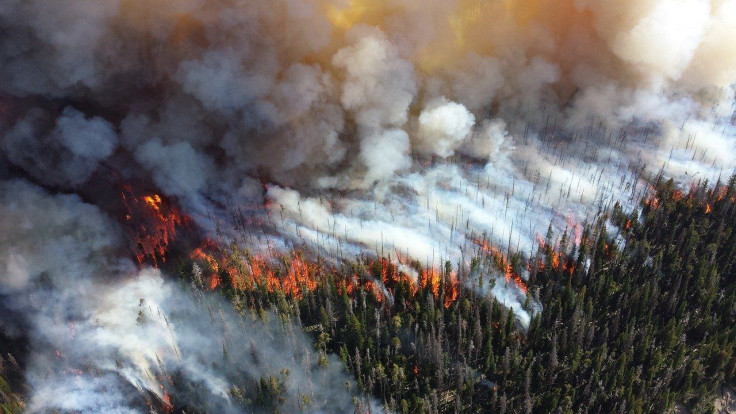Air Pollution From Wildfire Poses Grave Danger For Kidney Patients

KEY POINTS
- Forest fire emissions release a lot of carbon dioxide in the air
- New research found that fine particulate matter can lead to lung inflammation
- It also adversely impacts the health of those with kidney failure
Forest fire emissions are not only a major source of carbon dioxide but they also carry tiny bits of air pollutants called fine particulate matter. Researchers say these can be fatal for those with kidney failure.
The researchers of a new study, titled “Mortality in US Hemodialysis Patients Following Exposure to Wildfire Smoke,” used information from the U.S. Renal Data System, which contains data from people with kidney disease, and analyzed almost 49,000 deaths among people undergoing kidney dialysis in 253 counties from 2008 to 2012. They found that every 10 μg/m3 surge in the levels of fine particulate matter was linked to a 4% higher death rate on the same day and a 7% increase in deaths over the next month.
When the pollution level was above 10 μg/m3, the daily death rate increased to 8%, the researchers said in a press release from the American Society of Nephrology. Citing the wildfires that happened recently in Washington and California, Environmental Protection Agency (EPA) scientist and lead researcher Ana Rappold said they are a growing hazard to public health in the U.S. and the rest of the world.
She added that aside from destroying properties, wildfires yield high concentrations of fine particulate matter, or PM2.5, an air pollutant associated with increased mortality and morbidity when inhaled. Rappold said a greater health impact was consistently observed in critical populations, which include the elderly and those with chronic health conditions.
The EPA scientist explained that people with end-stage kidney disease are particularly vulnerable to the adverse health impacts of these fine particles.
"The findings highlight the impact of air pollution exposure in individuals receiving hemodialysis, and they support the need for more research to develop and implement interventions to manage exposure during wildfire smoke episodes in this population," Rappold said, U.S. News & World Reports magazine reported.
She stressed that while patients undergoing chronic dialysis have mortality rates higher than a group of similarly-aged and Medicare-eligible patients, there were not enough modifiable medical risk factors proven to successfully minimize the risk. The EPA scientist said the pollution level could be regulated using legislative action.
© Copyright IBTimes 2025. All rights reserved.





















